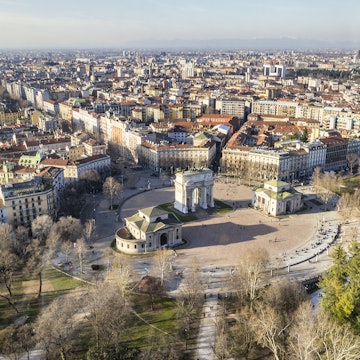
Why Japan’s Fukui province is a deep well of master craftsmanship
Sponsored by
Dec 22, 2020 • 5 min read

Echizen paper has a reputation as the finest in the country © Fukui Prefectural Tourism Federation
Japan’s Fukui province has qualities that would appeal to any visitor. For one thing, its scenery is dramatic, especially the cliffs of its Sea of Japan coastline. The region also features immaculately preserved archaeological sites, hearty regional cuisine, and some of the country’s finest craftsman traditions. The most important of these traditions, both based in the village of Echizen, are washi papermaking, and the manufacture of edge tools and weapons, from knives to scythes.
But in recent years, Fukui’s geographical situation between the feudal capitals of Kyoto and Kanazawa means Japanese and foreigners alike have frequently bypassed the region. These cities’ transformation into cultural and economic powerhouses have drawn visitors away from the more subtle, quiet pleasures of rural Fukui’s forests, rolling fields, and mountain villages.

Forging the finest blades
Ironically, in centuries past it was Fukui’s proximity to these cities that became the engine for its growth. According to legend, in 1337 the famous Kyoto swordsmith Chiyozuru Kuniyasu was fed up with poor-quality water in the city. Swords of the highest quality, which hung from the belt of every samurai in the city, naturally required the highest quality water. The water in Kyoto simply wouldn’t do for the level of craftsmanship he was trying to achieve.
He combed the countryside around the city for a spring of the purest quality. In Echizen he found what he was looking for. He set up a forge there, for production and instruction. Echizen soon developed a reputation for producing some of the highest quality swords in all of Japan – a reputation it maintains to this day.
The gentlemen samurai of Kyoto and Kanazawa needed swords, and later the farmers of feudal Fukui province needed steel scythes, hoes, and other edged agricultural tools. The forges of Echizen adapted as demand diversified, and ultimately Echizen became the largest producer of farming sickles in all Japan.

Hands-on tools and experiences
Much like the farmers, the contemporary visitor to Echizen might have more use for a kitchen knife than, say, a 30-inch sword. Luckily, the forges of Echizen have continued transitioning to meet customer demand. Today, Ryusen Factory Store and Takefu Knife Village, both in Echizen, produce what some call the world’s finest kitchen knives, employing centuries-old techniques first established by Chiyozuru in feudal times.
Visitors to Tafeku Knife Village, situated on the outskirts of Echizen city amid brilliant green rice paddies, can witness the craftsmen in progress from a special observation deck in the forge. At Takefu Knife Village, blacksmiths are in charge of their knives from start to finish – from shaping and hammering the raw steel and carbon, to the final stages of sharpening.
For visitors looking for a more hands-on experience, Tafeku Knife Village also offers knife-making workshops, starting at ¥7,000 (around $70 USD). The process of making a small, iron knife, under careful supervision from master knifemakers, takes about three hours.

The divine art of papermaking
One of Echizen city’s specialties is the paper knife, sharp enough to cut through paper as if it was butter. This brings us to the next traditional craft Fukui is famous for: washi paper. Similarly to knifemaking, this craft relies on Echizen’s famously pure spring water.
The art of papermaking was brought to Echizen more than 1500 years ago, according to local lore, by a beautiful goddess who appeared at the headstream of the Okamoto River and remarked on the quality of the water. Because pure, fresh water is necessary to make excellent paper, she reasoned, the people here could become masters at the craft.
The goddess knew what she was talking about. Today, among the many paper making areas of Japan, Echizen is known for having the longest history of papermaking, which has helped its artisans develop the best quality paper. There are several dozen paper mills in the village, and together they make hundreds of different types of paper. Some are simple, with one color of dyed pattern, and others are elaborate, with autumn leaves or flowers encased within.
In gratitude, the people of Echizen erected a shrine to the goddess, on the very river where she first appeared. The Okamoto Otaki Shrine is the only shrine in Japan dedicated to the goddess of paper, and features an ornate, undulating roof. It has been designated a national important cultural property.

Inside the papermaking workshop
As the artisans developed their craft, slowly Echizen paper gained its reputation as the finest in the country. In the feudal era, thick, plain paper made from the mulberry, or kozo, tree was used by the nobility and government for their documents, as well as in Buddhist temples and shrines to record sutras. Later, the Meiji government printed Japan’s first banknotes on Echizen paper.
At Echizen Washi no Sato, visitors can catch a glimpse into the age-old process, as artisans turn mulberry tree bark into delicate paper customized to a customer’s request. First, the bark is separated and cleaned. Next it’s beaten in a labor-intensive process into wood pulp. The pulp is bathed in spring water to separate the individual fibers, then scooped up in a rectangular wooden sieve in a time-honored process.
Enthusiastic visitors can take part in a workshop to practice the last step of the process: using traditional wooden sieves to create one or two sheets of your own washi. The workshop lasts a few hours and costs ¥5,000 per person.
The buzzy urban sophistication of Japan’s cultural capitals will always hold a certain mystique over its visitors and residents alike. But the gentler rhythms of Japan, a foundation which forms the base for everything this country has to offer, can only be truly sensed in the countryside, watching craftsmen do the same thing they’ve done for over a thousand years.

Don’t miss this riveting cultural side trip
While in Fukui province, don’t miss the Port of Humanity Tsuruga Museum. The museum, which opened in 2008, tells the harrowing story of the refugees and orphans of war-ravaged Europe who alighted here in the 1920s-1940s.
Regular shipping service between the port of Tsuruga and the Russian city of Vladivostok, and then the connection between Vladivostok and Europe via the Trans-Siberian Railway, meant a direct escape route for the persecuted Jews of Europe. Japan issued ‘transit visas’ to up to 6,000 Jewish refugees, probably saving the lives of many.
If you’re going
Adjacent to the fascinating Fukui prefecture, Shiga prefecture has sightseeing spots such as Japan's largest lake and its own traditional industry. The two areas are easy to explore. For more information, see why Intricate craftsmanship reflects the thoughtfulness of Japan’s Shiga prefecture
Sponsored by Shiga & Fukui Prefectures, Japan
As a travel entertainment and inspirational media outlet, we sometimes incorporate brand sponsors into our efforts. This activity is clearly labeled across our platforms.
This story was crafted collaboratively between Shiga & Fukui Prefectures, Japan and Lonely Planet. Both parties provided research and curated content to produce this story. We disclose when information isn’t ours.
With sponsored content, both Lonely Planet and our brand partners have specific responsibilities:
-
Brand partner
Determines the concept, provides briefing, research material, and may provide feedback.
-
Lonely Planet
We provide expertise, firsthand insights, and verify with third-party sources when needed.















